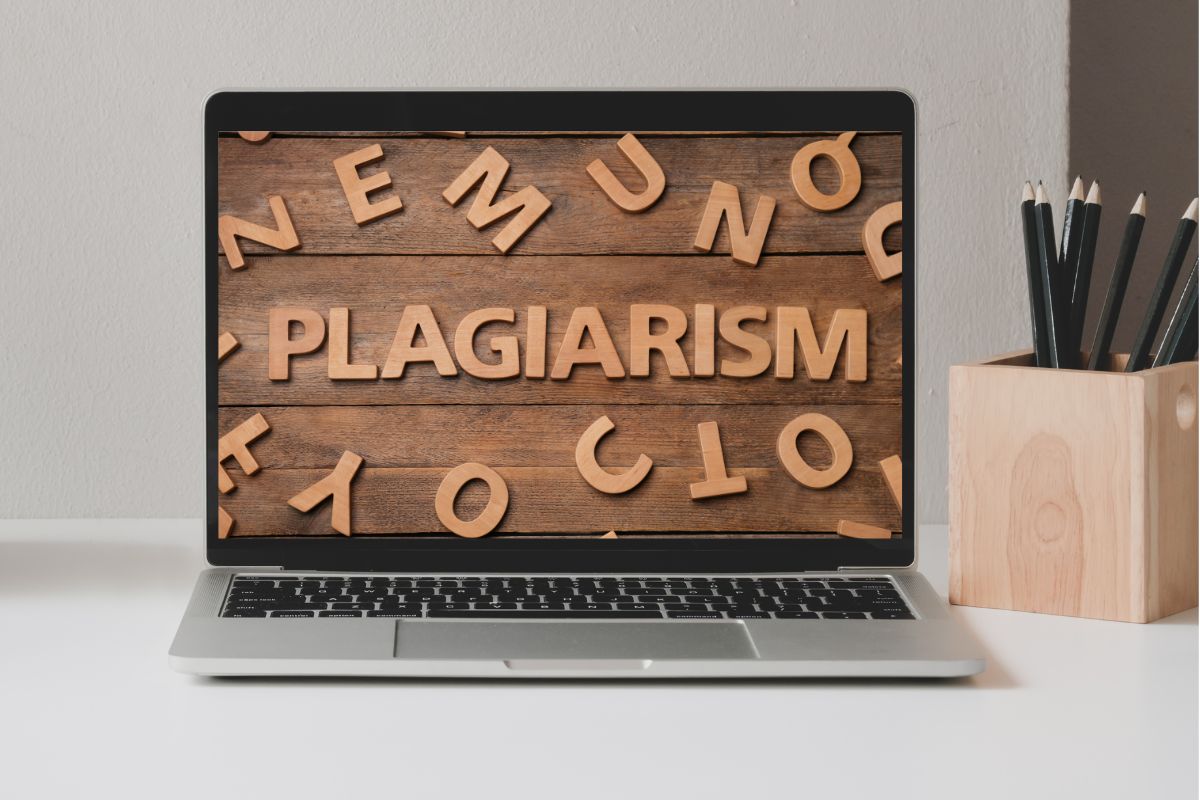Plagiarism is a topic that stretches way back through history.
Even iconic figures like Leonardo da Vinci were not immune.
His famous “Vitruvian Man“—yes, that drawing of a male figure perfectly enclosed in a circle and square—might have been copied from an earlier creation made by one of his friends.
This is only one of the many famous cases of plagiarism throughout the centuries, a problem still relevant today.
We’ve built technology into our daily routines, so the opportunities for plagiarism have increased.
AI tools, for instance, make content creation a lot more efficient. But this also increases the likelihood of plagiarizing, even without you realizing it.
Plagiarism in the workplace is a serious problem that needs to be addressed.
What are the implications of plagiarism? Let’s dive in so you can maintain integrity and professionalism at work.
Key Takeaways
- Workplace plagiarism damages careers, credibility, and professional trust.
- Legal risks include copyright violations, lawsuits, and penalties.
- Proper citation and attribution safeguard originality and ethics.
- Creating original content builds reputation and professional value.
- AI plagiarism is rising, making detection tools essential for accuracy.
- Undetectable AI’s tools help detect, humanize, and prevent plagiarism.
What are the Consequences of Plagiarism in the Workplace?
While plagiarism commonly happens in schools, it’s also something that happens at work.
Plagiarism generally involves using someone else’s content or ideas without giving any proper acknowledgment.
Plagiarism in the workplace, in particular, can come in different forms—from copying a colleague’s report to using online content without proper citations.
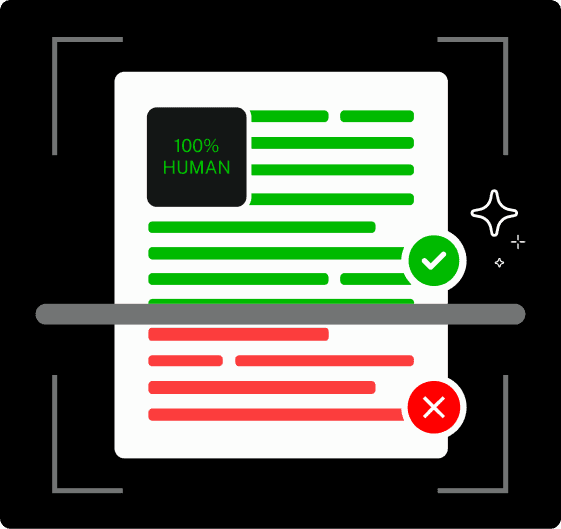
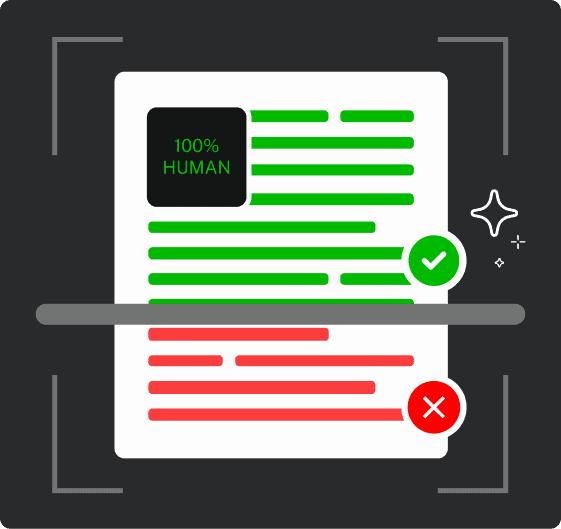
Never Worry About AI Detecting Your Texts Again. Undetectable AI Can Help You:
- Make your AI assisted writing appear human-like.
- Bypass all major AI detection tools with just one click.
- Use AI safely and confidently in school and work.
It can even be unintentional plagiarism.
It’s become so widespread that many web sources struggle with content duplication.
For example, recent SEO reports estimate that 25–30% of online content is duplicated across sites.
That’s why it is so easy to accidentally plagiarize, especially when you rely heavily on online resources.
But even without intent, the consequences of plagiarism in the workplace can be quite severe.
Being aware of the different types of plagiarism and how easily it can happen is essential to always make sure that whatever you produce is authentic.
And by understanding the potential effects and taking the necessary steps to avoid plagiarism, you can protect yourself and ensure your work remains original while keeping it high-quality.
Here are the repercussions of plagiarism in the workplace.
Impact on Individual Careers and Professional Reputation
Plagiarism can seriously damage your career and reputation.
Being caught plagiarizing can follow you throughout your entire life.
In many cases, when caught, you’ll either be fired or asked to step down from your current position.
This will make it extremely tough to land another respectable job since trust and integrity are important in basically any professional setting.
Even if you do manage to find a new job, your past actions can continue to affect how colleagues and clients see you.
Losing your credibility can also mean that there will be fewer opportunities for you to advance your career.
A lot less people will want to collaborate with you. Plagiarism can make maintaining a stable and reputable career a lifelong struggle.
Legal Implications and Ethical Considerations
People usually ask, “Is plagiarism a criminal offense?”
While it isn’t automatically illegal in the United States, plagiarism is still widely regarded as an ethics breach and it can lead to serious legal and professional consequences in certain contexts.
This means that plagiarism in the workplace can still lead to disciplinary actions.
The legal repercussions can be significant. Copyright laws are strict—remember that you can’t just use someone else’s material without properly referencing it.
A content creator has the right to sue a plagiarist if their copyright, patent, or trademark is violated.
This is when cases of plagiarism can be considered criminal offenses, potentially leading to a prison sentence.
Creators need to be very careful to avoid unintentional plagiarism and stay within legal boundaries.
Maintain the originality of whatever you produce and obey copyright laws to keep your professional integrity and avoid the risk of going behind bars.
The impact on your career and reputation can be difficult to overcome.
And even if the legal repercussions don’t necessarily result in criminal charges, they can still lead to serious disciplinary actions and lawsuits.
How to Avoid Plagiarism in the Workplace

Now that you know how severe the repercussions of plagiarism can get, it’s time to learn how to avoid them.
From understanding how to properly cite your sources to using plagiarism detection tools, you’ll be sure to keep your work original and credible.
Protect your professional reputation and also contribute to a more honest and respectful workplace.
Use Proper Citation and Attribution
Here’s the number one rule when it comes to making any type of content: always cite your sources.
This means giving credit where it’s due whenever you plan on using someone else’s material, ideas, or data.
These are some common examples when you need to properly cite and attribute your sources:
- Direct Quotes: Use quotation marks around the text and name the source. Include the author’s name, publication date, and even the page number if it’s relevant.
- Paraphrasing: When it comes to paraphrasing vs plagiarism, just know that paraphrasing isn’t wrong when you put the information into your own words and actually cite the original source to acknowledge where your idea came from.
- Summarizing: Condenses the main points of a larger text. This also requires attribution, usually including the author and publication year.
- Visual Aids: Don’t just grab images and go. Cite the sources of images, charts, and graphs just as you would with written content. If you’re unsure about an image’s authenticity, an AI Image Detector can help verify whether it’s AI-generated or sourced from a credible origin.
- In-Text Citations: Use this to be more clear and transparent, making sure that readers can trace where the information came from.
- Bibliographies: A complete list of all sources referenced in your work, formatted according to the appropriate style guide – commonly APA, MLA, and Chicago.
These practices should be able to avoid the pitfalls of plagiarism.
Proper citation not only acknowledges the original author’s contributions but can also enhance the credibility of your own work.
This shows that you’re doing your research and have total respect for intellectual property.
Need help formatting your citations correctly? Instead of guessing where commas or italics go, try using our APA Citation Generator.
Just plug in the author, title, year, and other basic details, and it instantly builds a clean, properly styled APA citation.
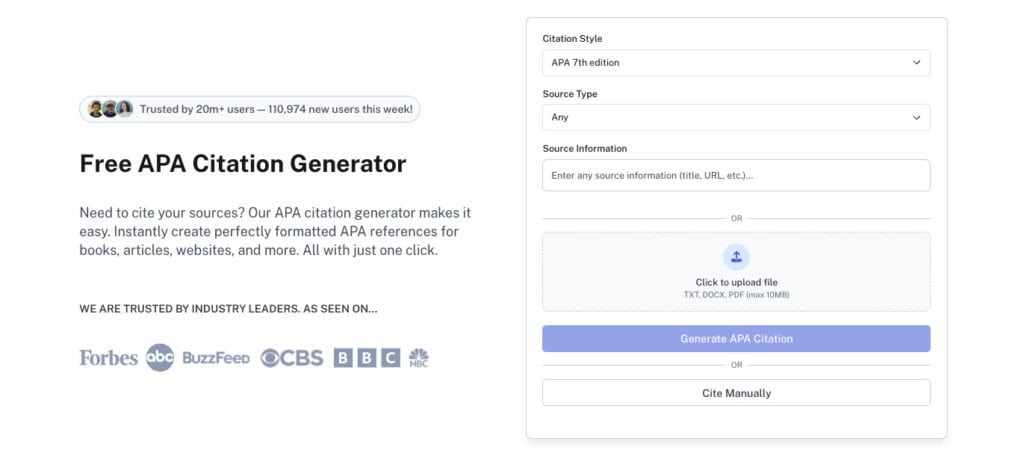
It’s a quick way to make sure you’re staying accurate and plagiarism-free without slowing down your workflow.
Create Original Content
There’s a famous quote by Moby Dick author Herman Melville.
He said, “It is better to fail in originality than succeed in imitation.” Originality is the very foundation for genuine success in content creation.
This not only differentiates you from the rest but also marks a piece of work as truly yours.
In the business world, just like in the entertainment industry, originality can be highly rewarding.
For instance, while movie franchises are big business, original films that resonate with audiences often become major hits, proving that unique ideas still reign supreme.
This applies to all aspects of content creation, too.
We know how hard it can be to create something completely original. Here are some tips to get you started:
- Read everything you can about your field to find out what’s going on and what’s missing. With this, you can create content for stuff that hasn’t been made yet.
- Dedicate a bit of your time to do some brainstorming sessions. Allow your mind to let loose and explore the different possibilities.
- Get your colleagues and peers involved. Exchange ideas and gain fresh perspectives from all sides that can help spark your creativity.
- Pay attention to industry trends and hot topics that can serve as a basis for making original content.
- Your experiences are a valuable resource in itself. You can get a lot of unique ideas by reflecting on what you’ve already been through.
Creating original content might require a lot of effort and dedication, but the rewards are worth it.
It protects you from plagiarism and can establish you as a thought leader in your field.
Utilize Plagiarism Detection Tools
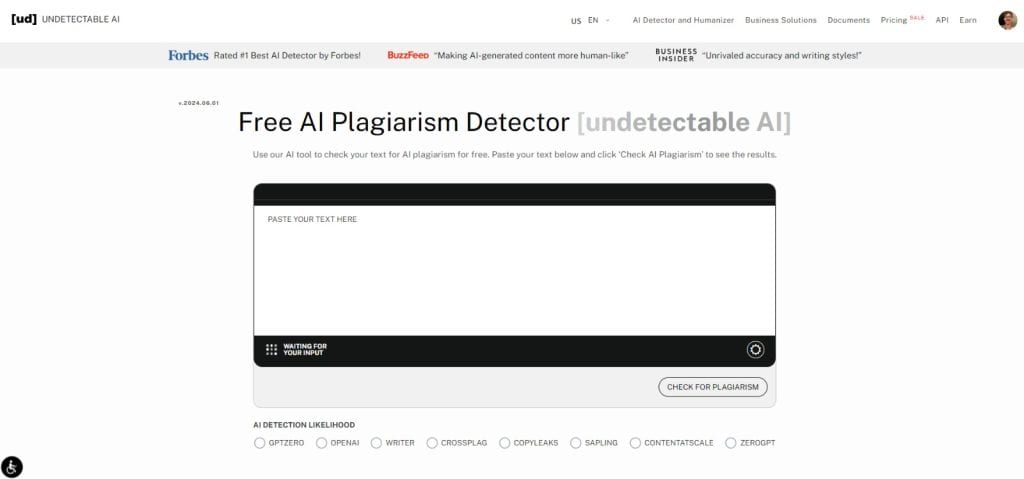
Especially with how fast-paced everything has gotten, AI tools have become essential in the workplace.
They help us streamline tasks, boost productivity, and even spark creativity.
But with these advancements also comes a new challenge: AI Plagiarism.
This happens when AI creates content that closely resembles existing work without giving any proper credit.
It’s not always easy to spot, especially as AI gets better at mimicking human writing styles.
Here’s where plagiarism detection tools come in.
Reliable tools like Undetectable AI are designed to analyze text against massive databases to check for suspicious similarities.
You simply input your text, and it does all the detective work.
This gives you peace of mind that your content is authentic and plagiarism-free.
It’s the assistant you’ve always been looking for – making sure everything’s good before you hit send or publish.
Ready to see the difference? Launch our AI Detector and Humanizer in the widget below!
FAQ’s About Plagiarism in the Workplace
Is it illegal to plagiarize?
Plagiarism itself is not typically illegal. However, it is considered a breach of academic or work ethics.
Depending on the context and severity, it can lead to disciplinary actions, legal disputes over copyright infringement, and damage to one’s reputation.
Can you go to jail for plagiarism?
In most cases, plagiarism doesn’t lead to jail time. But, if the plagiarism case involves some serious copyright infringement, it could potentially lead to legal action under copyright laws.
This could include fines or, in extreme cases, imprisonment.
Is plagiarism a criminal offense?
No, plagiarism is not typically a criminal offense and is considered more of an unethical act.
Plagiarism, however, can lead to civil lawsuits (including damages) if there’s copyright infringement involved, like copying and distributing someone else’s trademarked work without permission.
Conclusion
When it comes to plagiarism in the workplace, being aware and proactive is key to keeping your integrity.
Whether you’re a seasoned professional or just starting out, understanding the repercussions of plagiarism both professionally and legally can steer you away from unnecessary trouble.
And as AI continues to play a bigger role in content creation, the risk of AI plagiarism gets worse as well.
With Undetectable AI’s Plagiarism Checker, AI Image Detector, and AI Humanizer, you can scan, refine, and humanize your content to ensure it remains authentic.
By integrating Undetectable into your workflow, you can confidently take advantage of AI tools to enhance productivity without having to compromise on authenticity.
Together, we can contribute to a workplace environment that values honesty and innovation.
Try Undetectable AI today and write with confidence.
